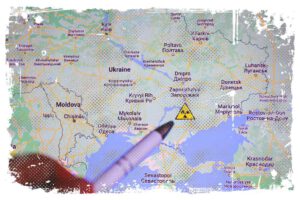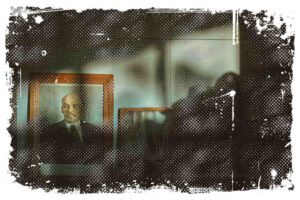If you ask the question of whether Poland was a state in 1914 before the outbreak of World War I, it is not a complex one. Even considering our long and multifaceted history. Before the partitions of the 18th century, Poland was a sovereign state with a rich cultural and political tradition. However, after the three partitions of 1772, 1793, and 1795, Poland was erased from the map of Europe.

For 123 years, and did not regain its independence until the collapse of the Russian Empire in 1917. In the years leading up to World War I, the question of Polish independence was a contentious one, with various groups and factions vying for control over the future of the Polish nation.
In this article, I will explore the historical context surrounding the question of Polish statehood in 1914 and examine the various factors that contributed to this political situation in Poland at the outbreak of World War I.
For How Long Before the WWI Poland Was Not a State?
Poland did not exist on the map of Europe for 123 years due to tragic event occurred in our history. At that time, the country known as the Polish-Lithuanian Commonwealth lost some of its lands to Austria, Prussia, and Russia. Austria took control of all of southern Poland, including the city of Lviv, up to the Zbruch River.
↳ PRO TIP: Do you like traveling? Then before you buy any ticket or book an attraction, check if it's available in this worldwide Viator Database. You may save a lot of money and time. No need to thank me :)
Meanwhile, Prussia annexed the regions of Warmia and Gdansk Pomerania, but not the cities of Gdansk and Torun. Russia seized the lands of Polish Inflants and the eastern, peripheral areas of the Commonwealth beyond the Dnieper and Druzhba rivers.
As a result of this event, known as the first Partition, Poland officially disappeared from the world map in 1795 during the second Partition. During the period of captivity that followed, the Polish people made several attempts to regain their freedom, but they were not successful. The country received no help from the alliance formed with Napoleon Bonaparte, and the November and January uprisings also failed.
The Road to Independence
It was not until the Great War, in 1914, that Poland was given another chance to reclaim its place on the global stage. During this war, Germany and Russia stood on opposite sides, while Austria-Hungary, plagued by internal conflicts, began to lose control over the territories it had occupied. In early 1914, independence movements in Poland started to recover.
Two years later, in December 1916, Tsar Nicholas II of Russia announced his intention to create a free Polish state, even though it was only propaganda meant to encourage the Polish people to fight against Germany. This announcement served as a signal that the Polish cause had not been forgotten.
In 1917, President Woodrow Wilson of the United States officially suggested that the creation of an independent Poland should be one of the conditions of the new post-war order. Roman Dmowski, a Polish leader, sent a memorandum to Entente representatives in March, outlining the territories that would be controlled by Poland. His actions caused other countries to support the cause of Poland’s independence. Six months later, the first units of the Polish Army were formed.
Poland Becomes a State Again
In the fall of 1918, Germany was losing the war and having trouble controlling the territories of the former Polish state. On October 7, the Regency Council of Poland issued a manifesto announcing the restoration of the Polish State.
The process of establishing the borders of the Second Republic of Poland took until 1922. During this time, several uprisings occurred in the country, with only the Greater Poland Uprising proving successful for the Poles. However, the three Silesian uprisings ended in defeat.
After plebiscites and the Silesian uprisings, the southern border was finally determined by a Polish-German agreement. In the east, Poland also engaged in conflict with Bolshevik Russia, ultimately losing the Battle of Warsaw in 1920.
During World War I, around three million Poles served in the armies of Russia, Germany, and Austria-Hungary (forced to do so). It is estimated that around one million of these Poles died or went missing during the war. Please read my other article in which I explain how Poland became a country in Europe.
What happened in 1914 in Poland?
On August 14, 1914, Grand Duke Nikolai Nikolaevich called on Poles to fight against the German invaders. He also announced the unification of Polish lands and the establishment of a free Poland with freedom of faith, language, and self-government.
How Many Years Poland Was off the Map of the World?
During the 18th century, Poland’s independence was lost and its lands were divided among Russia, Prussia, and Austria in the three partitions of 1772, 1793, and 1795. This caused Poland to disappear from the map of Europe for 123 years.
Who Took away our Independence?
The Partitions of Poland were a period in the history of Poland and Lithuania between 1772 and 1795 when the Polish-Lithuanian Commonwealth lost some of its territory to Russia, Prussia, and Austria. This happened either as a result of losing a war or under the threat of force.
Did We Try to Get Our Independence Back?
Throughout the 18th century, there were various groups and movements within Poland that sought to reclaim the country’s independence and restore its place among the nations of Europe. Some sought to achieve independence through armed resistance and revolutionary action, while others worked to mobilize public opinion and international support for the cause of Polish independence. It didn’t help that much actually. But..
We Were Good at Killing
For almost 10 years starting in 1905, there was a big rebellion in Poland. The Poles, who couldn’t win in open battles, started using terrorist methods. In 1906 alone, they killed 1,245 people by assasination – that’s at least 3 a day.
The Polish Socialist Party made teams of professional soldiers who were trained to fight, spy, use terrorism, and make bombs. They blew up trains and threw bombs at the Russian army’s leaders. They freed prisoners from places that were very well guarded and made plans to kill the tsar.
No enemy leader was safe. The Poles killed generals, high-ranking officials, and governors without mercy. They only stopped doing this when it looked like Poland might become independent again (read more about this).
We Were Good at Passive Resistance Too
The following story can be read on the elementary school website.
In March 1901, the elementary school in Września received a letter from the local administration stating that „religion classes” should be conducted in German starting with the new school year. The school inspector was also ordered to purchase German catechisms for the poorest students. When the new school year began, the oldest students in the school refused to accept the German catechisms and refused to answer in German. They used passive resistance. Initially, the teachers gently persuaded and convinced the students who were resistant.However, threats, detention, and even flogging were eventually used as punishment. The mass arrest did not change the attitude of the students, and their parents stood up in their defense.

The climax of the events in Września occurred on May 20, when the inspector arrived at the school. He ordered a two-hour detention for 26 first-grade students, during which they were supposed to learn the words of the song „Who Cares” in German. At 12 o’clock, those who had completed the task were released to go home. Fourteen children, however, refused to learn religion in German and were punished exemplarily. They were ordered to receive a flogging, with each child receiving 4 to 8 strokes on the seat and hands. The children left the school crying, and some had their hands so swollen that they had to carry their books under their arms. Sixty years later, Leokadia Wojciechowska-Stankowska remembered the event, saying „the doctor, after examining my hands, wrote out a certificate that I had a bodily injury. My hands were so swollen and sore that I could not write or draw for two weeks”.
Bibliography:
- https://pl.wikipedia.org/wiki/Ziemie_Rzeczypospolitej_pod_zaborami
- https://en.wikipedia.org/wiki/History_of_Poland_during_World_War_I/
- https://niepodlegla.gov.pl/en/about-niepodlegla/polish-roads-to-independence/




